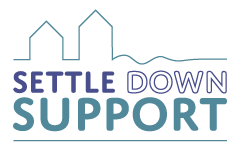When I was a student, I lived in a house that was built in the 1920s. In the winter, the heating was full-on, and I always wore a thick jumper. But still, I didn’t feel comfortable. I studied in the living room in the summer, because it was too hot. For many of you, this is what it is to live in the Netherlands.
When we considered buying a house, 7 years later, one thing was important: comfort!
Insulating your house
With cold winters and hot summers, insulating can help to make your house more comfortable. But how to start? In this blog, you find some steps. But first, the advantages and disadvantages.
Benefits of insulating your home
– Less use of energy. And energy is costly.
– More comfort, because the temperature in your house is constant.
– Future proof.
– House value will increase because the energy label will be improved.
– You will earn the investment back, by a lower energy bill. In most cases, within the next 6–10 years.
Contra’s
– There will be less natural airflow in the house. So, be aware to take care of enough ventilation in your house.
– You need money to do the investment of insulating your house in the Netherlands.
– Problems can appear when the insulation is not applied the right way.
Step 1: Research
Energy label
If you bought your house in the past years, there will be an energy label for your home. In this energy label, you will find the measures which you can take to make your house more sustainable.
Example: If you have an A-label house, you will find the advice for adding solar panels. Insulation will not bring so much.
But when the house has a C, D, E, F or G label, there is room for improvement. G means no insulation at all. With a C-label, maybe your roof or floor isn’t insulated. So you can consider improving the insulation. When the house you bought is having a G-label, probably the whole house needs a big renovation.
Note: if your energy label is not from 2021, the label is not as reliable as a new one.
Construction drawings
Most likely, you received the house’s technical drawings and documents. I recommend having a thorough look. You will find information about the construction and state of maintenance. So, you can make a wise decision for insulating your house.
Current situation
If you have the chance: inspect the cavity wall, construction of your roof or crawling space. Also, take some good pictures. What do you see? Does it feel humid? Do you see dark spots? Which layers of material do you see?
Step 2: Advice on house insulation
Insulating your house is not without risks. There is a chance for humidity problems. So always ask for advice. Every home is different, so you need information specific to your house.
Do you want advice? Just send a message.
Step 3: Budget
Insulating your house is an investment. But in most cases, you will earn it back in the next 10 years. And, it helps to keep the value of your house up. Most insulated houses sell more easily, even when the market is not so good.
Do you want to insulate the outside of your house or the inside? Insulating on the inside is mostly cheaper, but not always possible. For example, the cavity wall can be too narrow.
When you want to insulate on the outside, think about possibilities. Maybe you can change your roof into a sedum roof or green roof. But always, check the condition first. That will make a huge difference in the summer. Up to 5 degrees cooler than a “normal” roof. And no air conditioner needed.
Are there other things that need to be done at the same time? For example, repair the roof. Then it is time to think ahead! So you can save money in the future.
Subsidies
Nowadays, the Dutch government gives subsidy for insulating your house. Let’s use it. It’s about 15-30% of the costs. You can ask for a refund after the work is done. Need some help with this? You can plan an introductory meeting for free, by clicking here.
But maybe, insulating your house is not enough for you and you want a zero-energy emission house?
Step 4: Your wishes
What is more important to you: your money, nature, time or energy?
If you have enough time, you could think of insulating your house yourself.
Roof
Insulating the roof on the inside is normally the easiest thing to do yourself. The cost for materials to do it yourself starts from €1.000,00 for a small house.
Case study
Some customers asked to make a plan for insulating their roof. They bought the house a few years ago and needed the space on the attic to work. The house has a slanted roof.
At first sight, there was no insulation applied at all. But with removing the plasterboard, old insulation material was visible. And, there were signs that the surface was too wet in the past. Under the roof tiles, there was only wood visible.
The occupants wanted to do the roof insulation themselves but didn’t know which could be the best method. And if possible, do it the most environmentally friendly way.
We made a plan.
– They will first remove the old 5 cm thick insulation.
– Then add a special foil, apply 15 cm thick insulation. This foil will prevent moisture to accumulate in the construction.
– Applying the new flax insulation, 15 cm thick. Flax will grow back and has excellent properties.
-After that, add another foil, to prevent moisture from the inside to accumulate in the construction.
– Then finish it with wooden slats and plasterboard.
The total costs for materials are €1.700,00 for a 70 square meter roof.
Cavity wall
The cavity wall is a specialism. And, not that expensive to outsource. The cost will start at €1.500,00. Not all cavity walls are suitable for insulation. If that is the case, you can insulate on the outside or the inside.
Floor
Floor insulation is also something you can do yourself. But if you choose to change the way of heating in floor-heating, it is a totally different job. Outsourcing can be wise in this case.
Glass panels
Another way of insulation is changing single or double-glass windows into HR++ glass. HR means high efficiency. The difference with normal double glass is that an extra foil is applied to the glass. Also, gas is used within the glass panels. By doing this, the glass is insulating much more. But also think about applying rubbers around door- and window frames.
For more information, this blog can be useful.
Another thing to think about: what material is my preference and why? How large is the footprint? For now, it goes too far to tell you everything about all the materials.
Step 5: Implementation
Now is the time to ask for quotations or calculate the materials needed and order them.
As a planner, I learned to think of every detail. In the beginning, I always forgot the little things like screws, blades and tape. But that will cost a lot of time while doing the job. Take your time, crunch some numbers, and it will pay out.
Step 6: Subsidies
Now, the good part of this blog. Every municipality has its own subsidies. And some are nationwide. On this website, you can find which subsidies are available in your case. And, in this blog about subsidies, you will also find a lot of information.
Have you done the work yourself? Check the website of the municipality if you can apply for subsidies. Have you outsourced the work? You can apply for the ISDE subsidies.
Resume
Insulating your house is a good investment. Depending on your specific situation, you can research the possibilities. By improving the insulation, you also improve the energy label of your house. This can help you to retain the value of your house.
When you insulate your house, investigate what would be the best method for your home. And if subsidies are available.
Let’s start today by drawing up a plan for insulating your house together! Start by planning a kickstart!




I am interested in insulation solutions for my 1940 house, particularly floor
Please contact
Phone 629711985
I will call you tonight!
I live in a eengezins wooninc huis with 3 bedrooms.Summers are hot in the house,in winter inspite of gas, heating is not sufficient too.
It’s a huur huis and was constructed in 1970 .
I need to know if I get full subsidy to get insulation done .
Hi Sangeeta,
Good question! I know some people who live in rental houses are allowed to insulate the attic. But I don’t know sure if this is allowed by Wooninc. You can call Wooninc and ask what is possible (or when they plan to start making your house more sustainable). What is possible is: applying radiator foil, use led-light, closing doors and, only heat the rooms where you are at the moment. Maybe, you knew this already.
Good luck, and if this information is not enough, please send me an e-mail.
Marijke
Hi, I want to insulate roof of my house from outside. Can you please give me a price indication.
Hi,
Thank you for your question. This question is not an easy one. Houses differ a lot. How large is your home? How many windows? And, you may need a permit because you change the house’s appearance. Or do you mean that you want to fill up the cavity wall? Feel free to send me a private message on info@settledownsupport.nl.